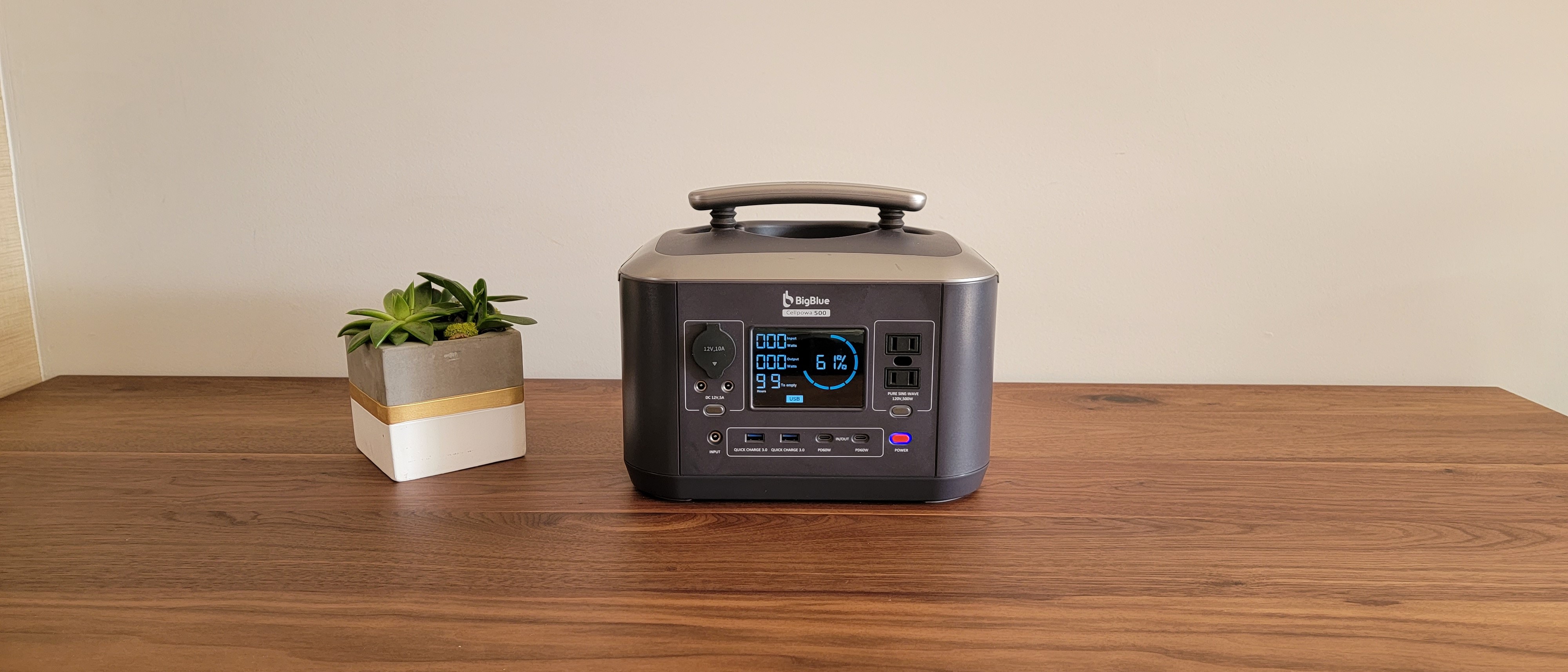TechRadar Verdict
BigBlue’s Cellpowa 500 is a slick power station that complements any workspace with best-in-class battery chemistry and an array of output ports.
Pros
- +
Big clear display
- +
LiFePo4 battery chemistry
- +
Fast charge
- +
Quick operation
Cons
- -
Heavy
- -
Can be noisy
Why you can trust TechRadar
Two minute review
The market for a 500W class portable power station is still in its infancy and while products offering 1000W or more are easily available, there are many advantages to having a smaller unit. First it is more affordable and less bulky which results in a product easier to transport. It provides more usage since it brings AC and DC sockets to places where space is at a premium, on an office desk for example. Finally, a smaller battery means faster charge time.
BigBlue has recently introduced their Cellpowa 500 (CP500), a 500W class power station. Their main differentiator is the battery technology used which provides over 2000 charge cycles as well as a wide range of output sockets. The sleek industrial design will blend well on an office desk. The price remains competitive at a MSRP of $499 which brings it to one dollar per watt.
BigBlue is being aggressive right now with the CP500 available for less than $350 for a limited time. At this price, it is a very interesting equipment for anyone in need of an emergency power source. It comes complete with six low-voltage outputs and two AC sockets. The Cellpowa 500 can also be charged quickly through two Type-C sockets working in tandem and the DC input socket, bringing the total charge time under three hours.
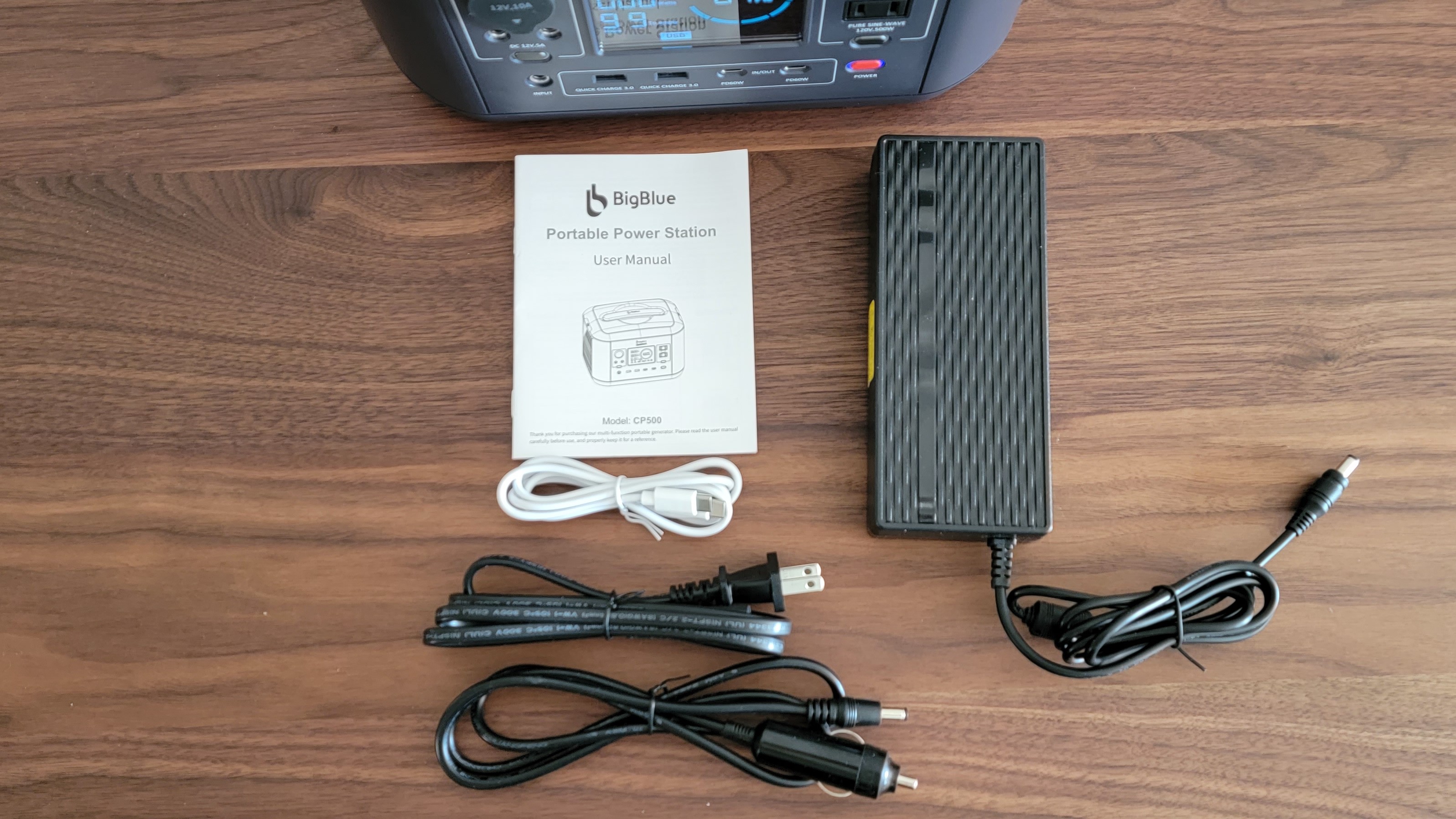
Design
The Cellpowa 500 is shipped in a box surrounded with high-density foam and comes with a wall adapter, a car charger, one USB type-C cable and one user manual. The gray plastic enclosure feels solid and has round edges.
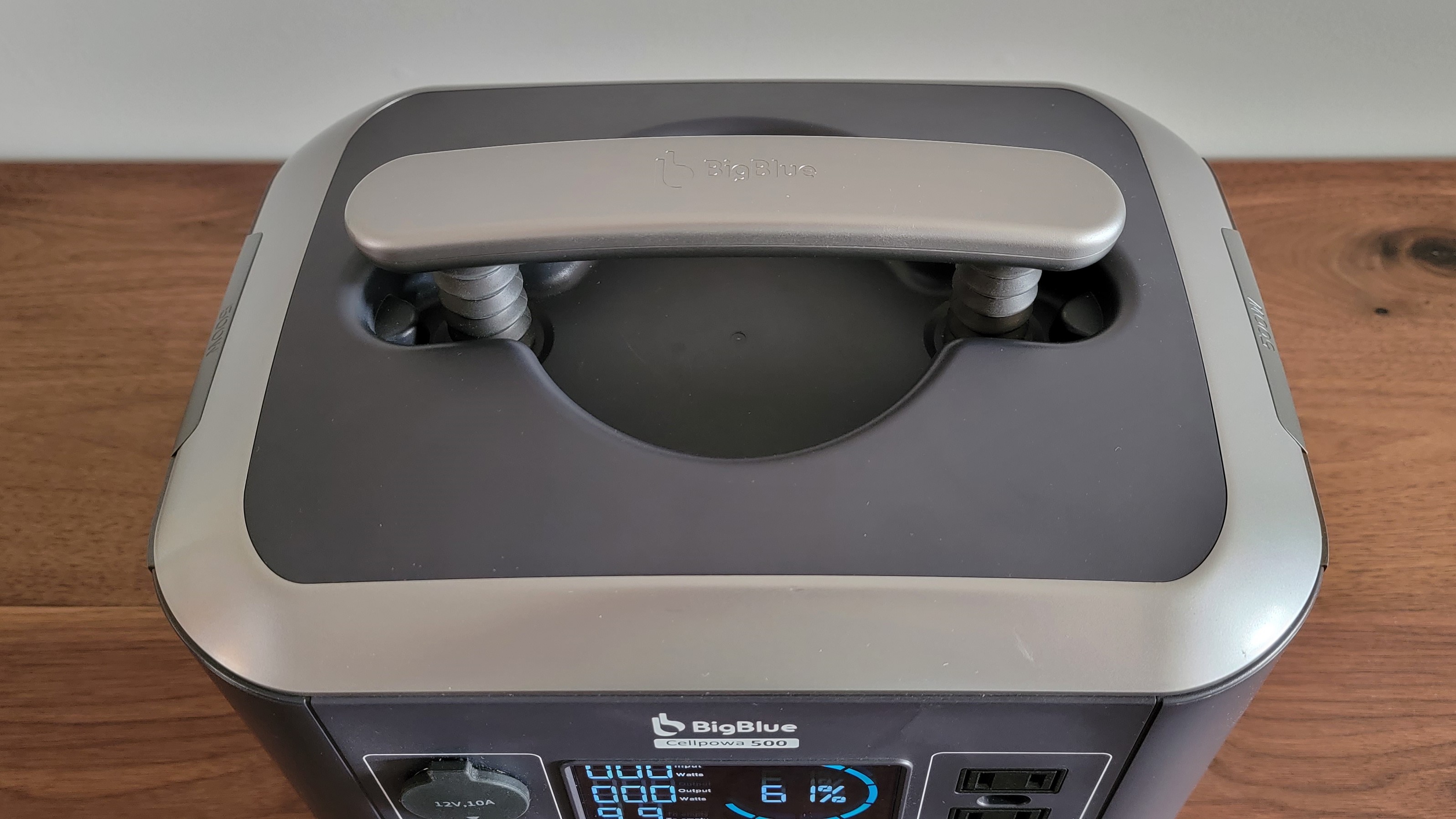
Two types of handle are built in the case, a retractable one to carry the unit with one hand and a pair on the side molded in the plastic. The station is quite heavy for a 500Whr battery capacity, weighing 7.7kg and measuring 29 x 21 x 21cm.
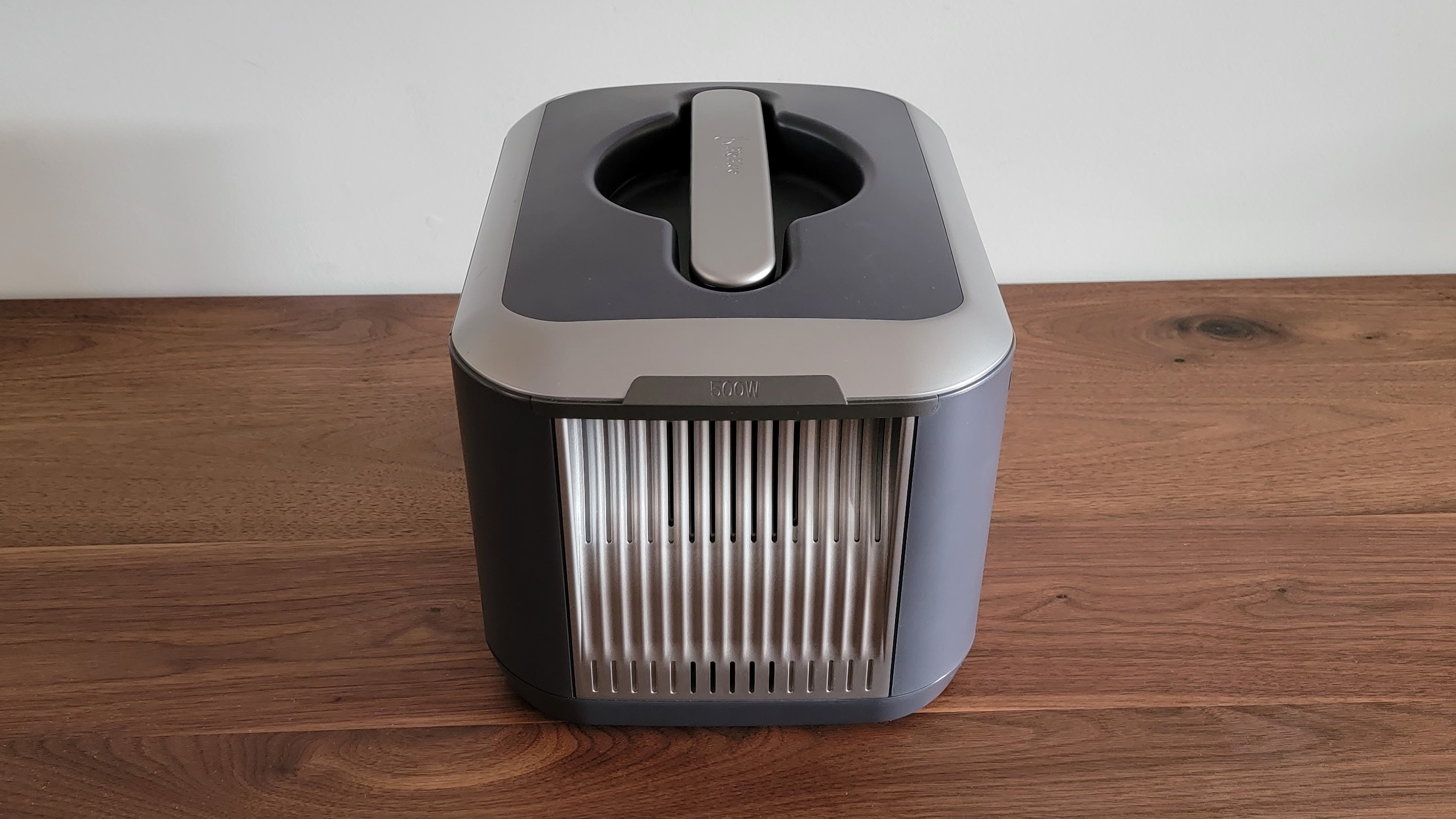
Two fans located on each side cool down the internal components of the Cellpowa. They are activated whenever the AC inverter or charging circuitry heats up, generating a low hum.
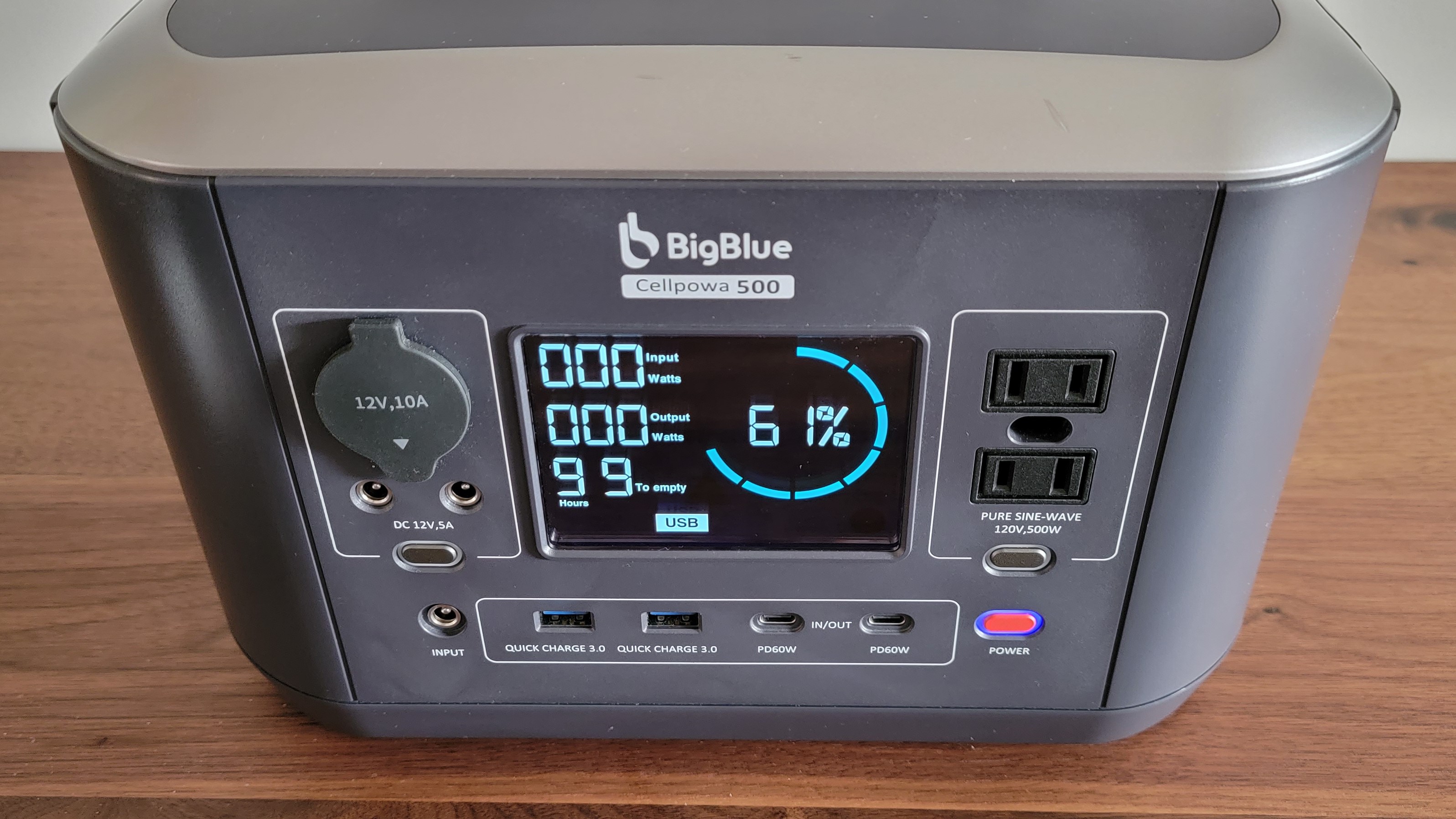
The CP500 sports seven low-voltage output ports and two AC output sockets. Three 12V ports are available to the user, two 2.1mm barrel types that provide 60W ideal for gadgets such as drones or RC cars and a single 120W cigar socket. The 12V section is enabled through a push-button. The second low-voltage group contains four USB sockets, half of them being Quick Charge 3.0 Type-A and the remaining half being PD 60W Type-C. This section is enabled through the dual-purpose power button.
Sign up to the TechRadar Pro newsletter to get all the top news, opinion, features and guidance your business needs to succeed!
The two AC output sockets have a combined output of 500W. They share a single earth prong which limits the type of plug that can be used simultaneously. The inverter outputs a sine-wave mimicking the voltage available on a power grid which increases efficiency. As with other output sections, the AC sockets are enabled through a push button.

The Cellpowa 500 is based on the more expensive and heavier LiFePo4 battery chemistry which provides over 2000 charge cycles before having a 20% drop in capacity. The station also comes with a built-in MTTP solar charger. With an improved efficiency, the MTTP can fully charge the station using solar panels in less than six hours. Finally, a 4W LED flashlight is available at the back which is helpful in case of an emergency.
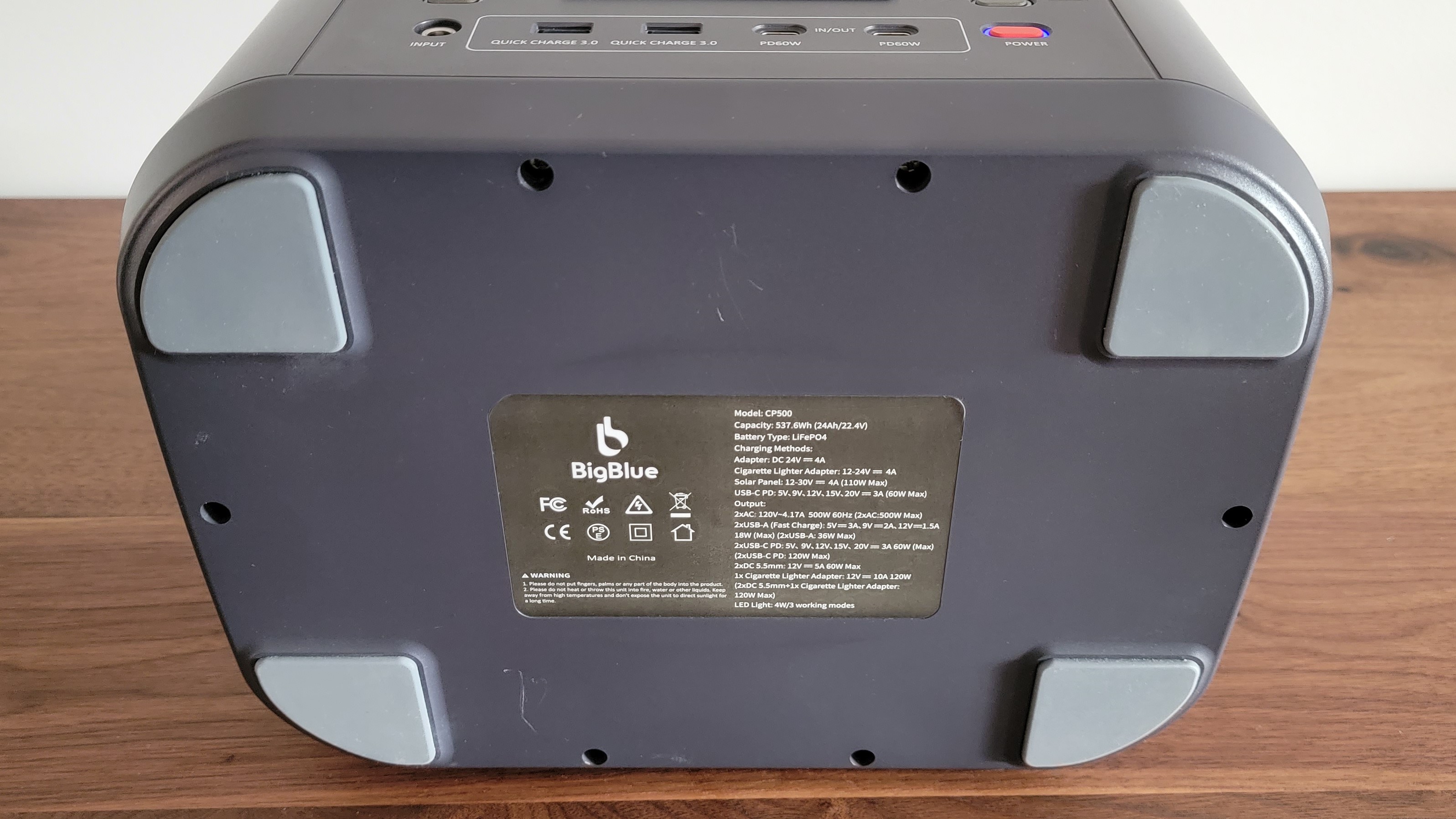
In use
BigBlue’s CP500 is very simple to use. Push buttons activate the various features with most of them being single purpose. The red power button located on the front serves two purposes. While a long press turns the unit on and off, a short press toggles the USB section either activating or deactivating it. The flashlight also uses a multi-function push button and is activated through a long press. The LED will switch mode on any subsequent short presses with the fourth turning it off completely.
The user interface is easy to understand thanks to being segmented. The high contrast display uses blue segments on a dark background and is divided into three regions. Power indicators located on the left give real-time data for the input and output sockets. The right of the screen gives the amount of battery charge remaining as a percentage. Lastly, the bottom row contains icons corresponding to outputs and options that are currently enabled.
Charging the Cellpowa 500 can be done in three ways. The simplest is to use the supplied 96W power adapter which will top an empty battery in six hours. The two USB Type-C ports can also be used either individually or in tandem to charge the unit and provide a maximum of 120W as input power. All three DC inputs can be used to give a combined 210W of charging power, reducing the charge time to two and a half hours. Charging using a solar panel remains an option but is the slowest as the input socket is capped at 110W.
The BigBlue power station comes with an 18 month warranty out of the box and integrates protections on the outputs. An over-current on the AC socket for example will disable the output resulting in a red icon blinking on screen. The user simply needs to remove the appliance causing the surcharge and power-cycle the unit to recover from the fault. Another useful feature is the ability to power the DC outputs from the main line, switching to battery mode only when the latter is disrupted. This is similar to a computer UPS but only for DC and limited to 96W. The two fans, when turned on, produce a non-negligible amount of noise and can be annoying in an office setting.
The competition
The main competitors of the Cellpowa 500 are the well established names in portable power solutions such as Bluetti, Jackery and Ecoflow offering products with similar performance. What makes the solution from BigBlue standout is the use of the superior LiFePo4 batteries and the large LCD.
The Bluetti AC50S power station features a 500Wh battery and has similar output socket types. At a discount price of $360, it matches the price of the Cellpowa 500 but with an older Lithium chemistry offering 1000 charge cycles before incurring a 20% charge drop. Moreover, the AC inverter output power is 300W while the Type-C sockets can only output a maximum of 45W.
Jackery’s Explorer 500 is another example of what the competition has to offer. It has a MSRP similar to the Cellpowa 500 but uses much older technology. There is no Type-C connector while the fastest charging time for the Jackery is a sluggish 7.5hrs. The battery technology is also the regular Lithium Polymer giving at least 500 charge cycles.
Perhaps the station that resembles most the Cellpowa 500 is the Ecoflow River Max with its 576Wh battery and 600W AC inverter. It is more expensive with an MSRP of $600 and uses the older battery technology capable of only 500 charge cycles before hitting 80% battery capacity.
Final verdict
With the CP500, BigBlue’s has a very good product capable of rivaling with the likes of Jackery and Bluetti. As with many battery-based products, its success depends on the price and the support provided. From the initial test, the unit is adequate in an office or workshop. It provides plenty of ports for devices one may have on the desk such as smartphones and laptops. In the workshop, the CP500 can be used to power medium size electric tools such as a power drill. The other aspect that we liked is the big screen. The main selling point remains the battery type, with the LiFePo4 guaranteed to give many useful years to its owner.
The Cellpowa 500 is not without faults. The fans are a bit loud which can be annoying if placed in a quiet environment. It is heavier than other products which is of course a result of the battery technology used. A UPS mode that only supports DC outputs prevents any usage with a desktop PC. The input power through the wall adapter which is limited to 120W extends the charge time while also limiting the number of DC devices that can support the UPS mode.
With a better designed UPS mode and more juice on the input, the CP500 could have been a great unit, replacing these pesky extension cords and USB chargers while providing an automatic power source in case of an outage.
We've also highlighted the best portable power stations and the best portable laptop battery chargers
My interest has been piqued by everything electronic since a young age, with a penchant for the dark art of tearing things apart. My daily duty is to marry software and hardware modules and I have to admit that this is much harder than cooking. When I’m not busy at work, I’m on the lookout for the latest and greatest hack! I am passionate about portable power generators (or power stations) as well as maker products such as the Raspberry Pi and any similar SBC (single board computers)
